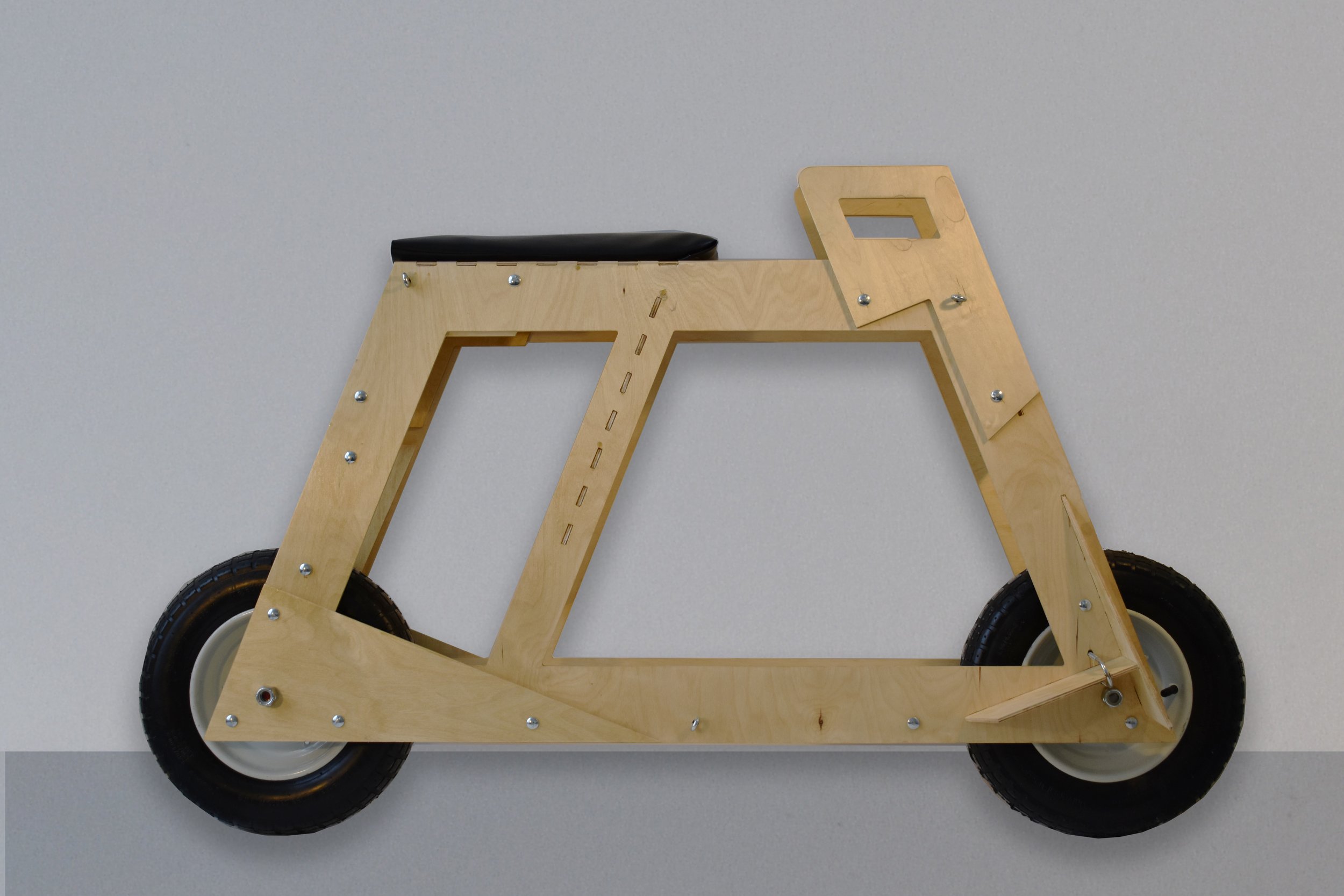In 1816, a bicycle precursor, the laufmaschine was introduced in response to a global climate crisis known as "The year without summer". The Northern Hemisphere of the world faced food shortages, and people needed to forage longer distances without the aid of horses, which were scarce during the crisis. Today, the bicycle is the face of future carbon-neutral transportation. BIKEA applies the IKEA simple assembly method to the laufmaschine. The fabrication process was completed on a CNC machine where the frame was efficiently carved out from a 4'x8' sheet of 1/4" plywood. Notions of efficiency and low carbon materiality in a climate crisis are crucial for designing sustainable transportation. Once assembled, BIKEA raced against competing studios.







